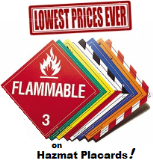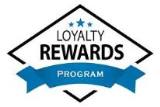TANKERS (CDL)
USA Fleet Supply offers training products for drivers seeking the CDL Tanker Endorsement. Our products are geared towards classroom training as well as individual training and self instruction.
Hours of Service in a Tank Vehicle:
The maximum driving time within a work period is 10 hours for drivers of tank vehicles with a capacity greater than 500 gallons when transporting flammable liquid. (49 CFR 395.1)
Liquids in bulk are transported in tanks, mounted on trucks, semitrailers, or full trailers. Transporting liquids, including liquefied gases, in tanks requires special skills because of the high center of gravity and the liquid surge of the cargo.
High Center of Gravity:
High center of gravity means that the load is carried high up off the road. This makes the vehicle top-heavy and easy to roll over. Tankers often roll over. Tests have shown that tankers can turn over even at the cautionary speeds posted for curves. You should drive on highway curves or onramp/ offramp curves well below the posted speeds.
Liquid Surge:
Liquid surge results from movement of the liquid in partially filled tanks. For example, when coming to a stop, the liquid will surge back and forth. When the wave hits the end of the tank, it tends to push the truck in the direction the wave is moving. If the truck is on a slippery surface such as ice, the wave can shove a stopped truck into an intersection. The driver of a tanker must be very familiar with the handling of the vehicle.
Controlling Surge
-
Keep a steady pressure on the brakes.
-
To control the surge do not release brakes too soon when coming to a stop.
-
Brake far in advance of a stop and increase your following distance.
- If you must make a quick stop to avoid a crash, use controlled or stab braking. Also, remember that if you steer quickly while braking, your vehicle may roll over.
Bulkheads:
Some liquid tanks are divided into several smaller tanks by bulkheads. Bulkheads are liquid-tight separators between compartments inside the tank. When loading and unloading the smaller tanks, the driver must pay special attention to weight distribution. Do not put too much weight on the front or rear of the vehicle.
Baffled Tanks:
Some tanks have compartments in them that have holes. If the compartment walls have holes in them, they are called baffles. Baffles let the liquid flow through and help control the forward and backward liquid surge. However, side to side surge can still occur which can cause a rollover. Drive slowly and be careful in taking curves or making sharp turns with a partially or fully loaded tanker.
Unbaffled Tanks:
Smooth bore (or unbaffled) tankers have nothing inside to slow down the flow of the liquid. Therefore, forward and back surge is very strong. Smooth bore tanks are usually those that transport food products such as milk. Sanitation regulations rule out the use of baffles because of the difficulty in cleaning the inside of the tank. Corrosive liquids are also routinely transported in smooth bore tanks. Be extremely cautious (slow and careful) when driving smooth bore tanks, especially when starting and stopping.
Outage:
Never load a cargo tank totally full. Liquids expand as they warm and you must leave room for the expanding liquid. This is called outage. Since different liquids expand by different amounts, they require different amounts of outage. You must know the outage requirement of your load when transporting liquids in bulk.
How Much to Load?
A full tank of dense liquid such as some acids may exceed legal weight limits. For that reason, you may often only partially fill tanks with heavy liquids. The amount of liquid to load into a tank depends on:
-
The amount the liquid will expand in transit.
-
The weight of the liquid.
-
Legal weight limits.
-
Temperature of the load.
View our full line of CDL Tanker products
Tanker Truck CDL Test Question and Answer Booklet
This book contains seventy five CDL commercial drivers license tanker test practice questions and answers. These questions and answers were written by professional authors with extensive knowledge and experience in the transportation industry. This book was designed to help drivers pass the commercial drivers license tanker exam. Each question allows the participant to select the correct multiple choice, true false or fill in the blank answer. Just $5.99
Products
Your Cart
Your Account
 Login Status
Login Status





